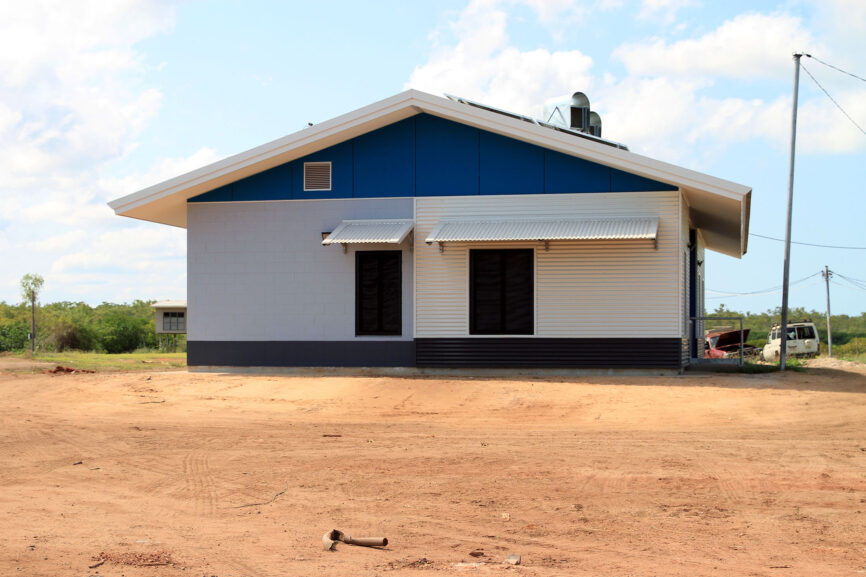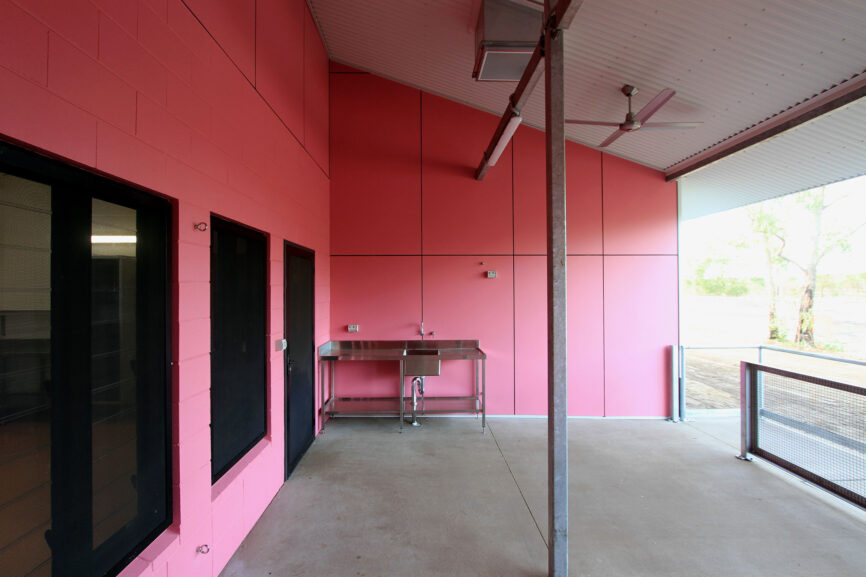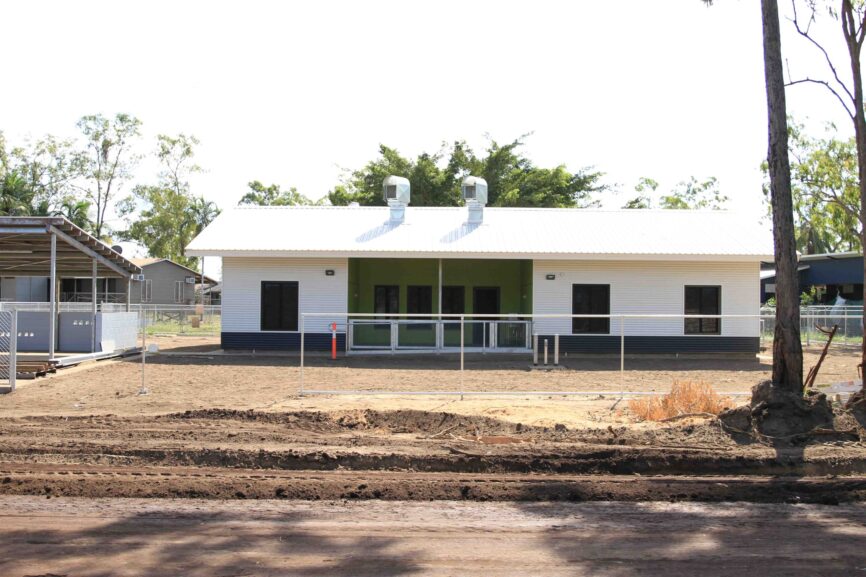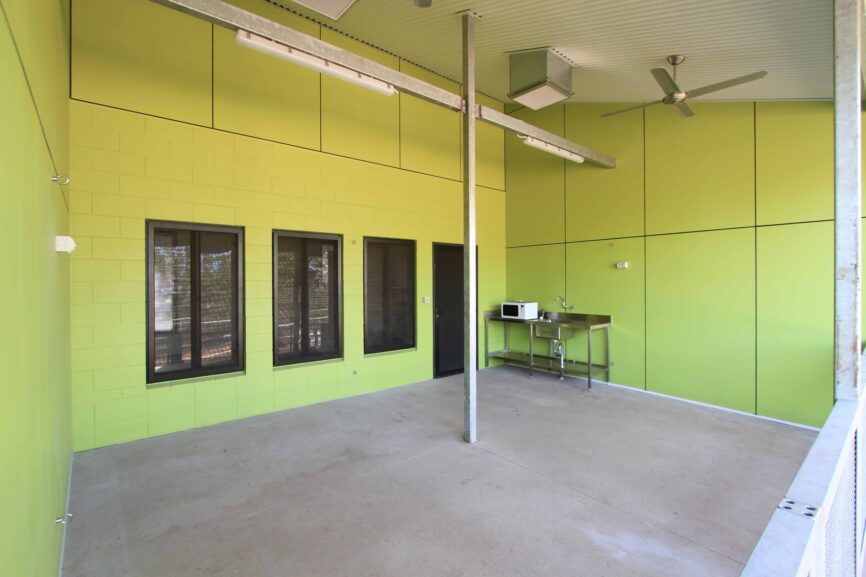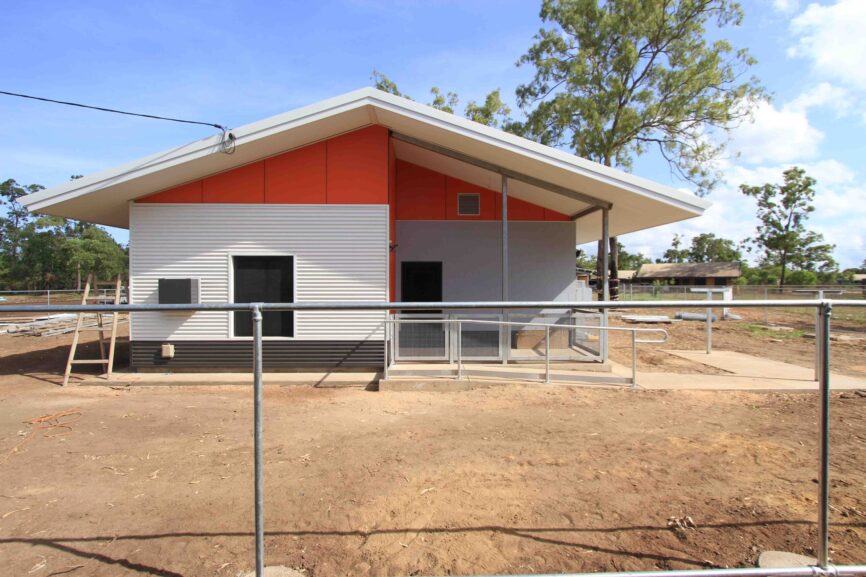
Groote Archipelago Housing Programme
“The architects when you came and sat together with us showing us how we want our house designed, you know. Yeah, i’m happy, it’s the first time for us choosing our house the way we want.”
Introduction by
Cherelle Wurrawilya
Board Member, Anindilyakwa Land Council

Credit: Bo Wong
What was the issue?
For far too long, housing on Groote Eylandt had been in short supply, was culturally inappropriate, poorly built and difficult to maintain. On our first trip we were presented with a Strategic Plan that declared 100 houses needed to be built as a priority. The question we were asked was where should the houses be built… and how quickly can you do it?
The first thing we did was take a step back; we wanted to find out what was needed, what people wanted, and what has and hasn’t worked in the past. Critically, we wanted to understand why. The Groote Housing Master Plan and the Groote Housing Guide formed the first important stage of this project.
In short our advice was to ‘build no more than 6–10 houses per year and design them in such a way that local contractors can do the work. Build properly and for the long term. Learn from the past and ensure all houses are culturally and climatically appropriate.’
We chose not to innovate. Instead we looked to the past and studied the work of others with vast knowledge in this space – from CAT to Troppo to Health Habitat.
We designed house plans that are flexible and modular in the way they respond to living arrangements, lot orientations and breeze patterns.
We spent time talking through each plan, learning from the community what might work and what wouldn’t.
Each plan addresses the cultural factors that often lead to crowding stress; e.g. bedrooms are located in clusters on opposite sides of the house and each cluster has its own bathroom.
Protected verandas act as extra sleeping areas for visitors.
We embraced the tarp! Non-structural columns and beams have been added to each veranda to allow the creation of temporary walls.
Carports include tie-off points and power, enabling them to be used as an additional outdoor living space.
Air-conditioners are included in the base design, ensuring quality installation and better opportunities for ongoing maintenance.
We’ve further improved thermal comfort through the inclusion of insulation, which helps to prevent mould and allows air-conditioners to work more efficiently.
We’ve used concrete block-work, which has a longer life-cycle, is easier to maintain and adapt in the future, and allows for better thermal comfort.
We’ve standardized as many of the structural components as possible, with the idea that you can build more effectively over time.
Our selection of fixtures and fittings was based on robustness and suitability.

What was the impact?
Adaptable housing plans allow for fluid occupation and the potential for changing family structures.
Robust detailing, contract administration to ensure quality construction and careful fixture selections have the combined effect of less wear and tear on buildings.
Enhanced thermal insulation, the capturing of local breezes through better orientation and a response to indoor/outdoor living patterns means the houses are better suited to the climate and cost less to run.
General health and wellness will be improved through less exposure to mould and the installation of appropriate health hardware.
The local economy will be boosted through the training and contribution of local Indigenous construction and maintenance teams.
They don’t look like standard housing nor a passing phase. These houses are elegant but at the same time perfectly fit within the local context.

Measuring impact using the principles of SRODI
As part of our ongoing commitment to improving our work and offering to our clients, we have developed a kit of evidence-based tools to measure the financial value of a project’s social impact. Our Social Return on Design Investment (SRODI) tools draw on global best practice and can be used to inform and evaluate the design and construction of built environment projects.
Here on Groote, a SRODI Project Impact Evaluation is underway to demonstrate the success of the GAHP project, and to assist AHAC in their application to be registered as a Community Housing Provider.
This work is being supported by QuestionPro who are generously providing us with free survey templates for use in our investigations.
